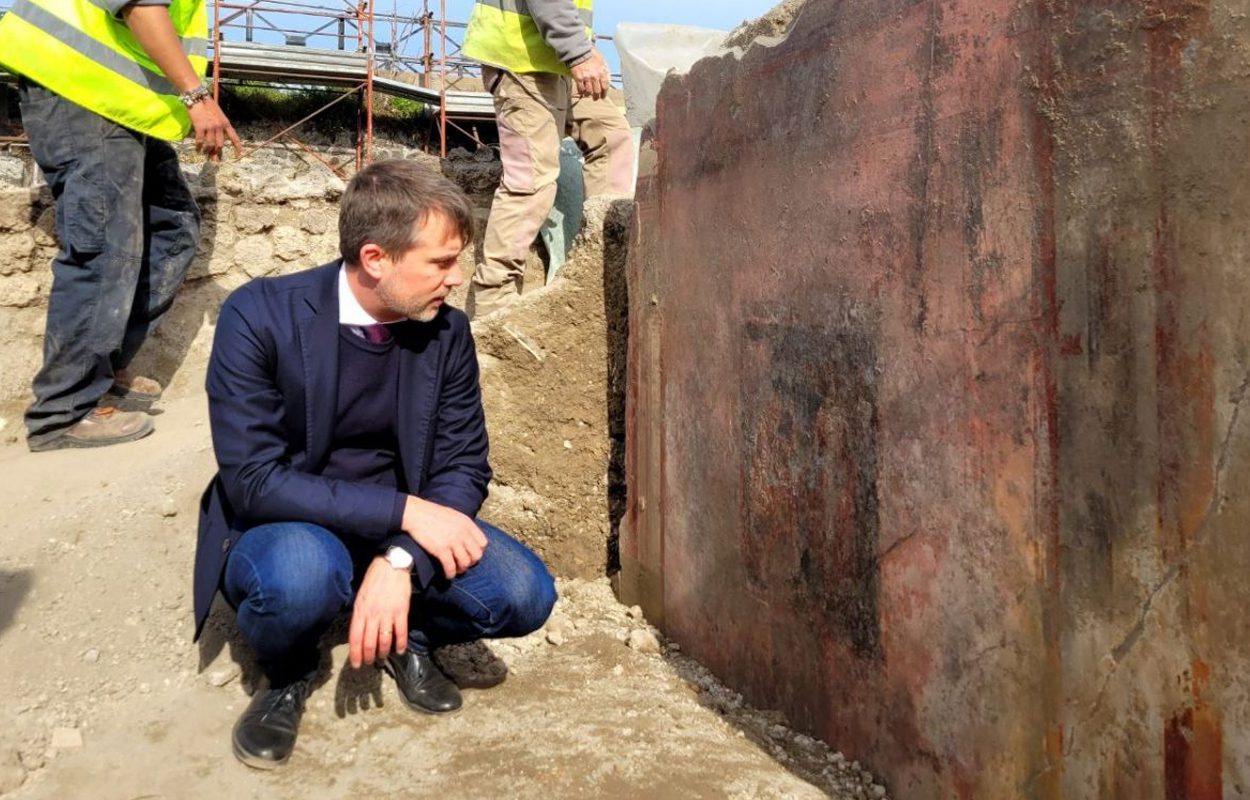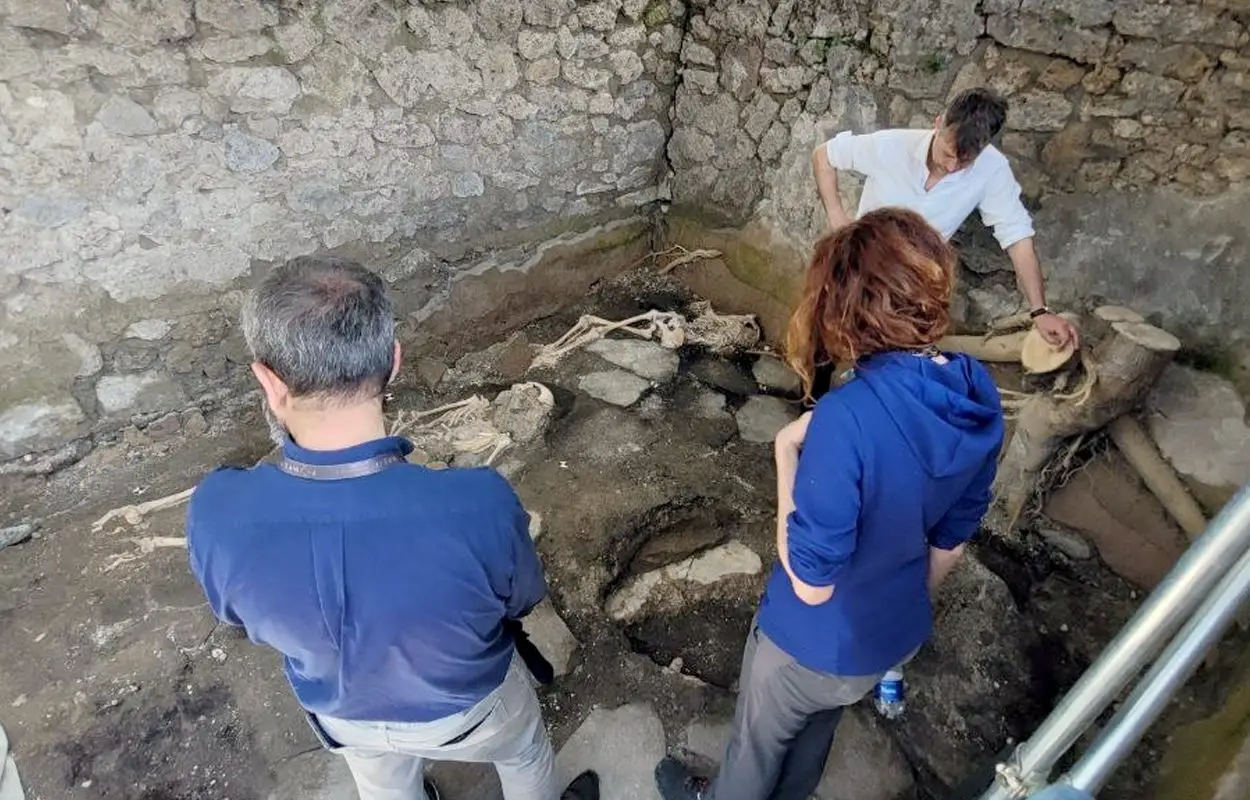Archaeologists are conducting new excavations in Pompeii’s Regio X at a previously unexplored area .
Pompeii was a Roman city, located in the modern commune of Pompeii near Naples, in the Campania region of Italy. Pompeii, along with the Roman town of Herculaneum, were buried under 4 to 6 metres of volcanic ash and pumice during the eruption of Mount Vesuvius in AD 79.
The Vesuvian eruption spewed forth a deadly cloud of super-heated tephra and gases to a height of 33 km, ejecting molten rock, pulverised pumice, and hot ash at 1.5 million tons per second, ultimately releasing 100,000 times the thermal energy of the atomic bombings of Hiroshima and Nagasaki.
The excavation area is focused on Insula 10 of Regio IX, which occupies the central part of Pompeii, bounded to the north by the Via di Nola, to the west by the Via Stabiana, and to the south by the Via dell’Abbondanza.

The site was first investigated in 1888 but was interrupted, which partly excavated two atrium houses built in the Samnite period when Pompeii was conquered by the Samnites, an Oscan-speaking Italic people.
The area was developed in the 1st century AD into product workshops and a fullonica (laundry), with work benches and basins for washing and dyeing cloths. Also constructed is a bakery with an oven, and rooms for the processing of food products.

Excavations of the rooms have revealed three victims of the Vesuvian eruption, who had taken refuge but died when the structure collapsed. An anthropological investigation has identified that two of the victims are adults, while the third is a child approximately 3-4 years of age.
In the atrium of a house with an adjoining oven, two frescoes with scenes from Roman and Greek mythology have re-emerged, depicting Poseidon and Amimone in the first, and Apollo and Daphne in the second, in addition to traces of charred furniture due to a fire that broke out during the catastrophe.
Header Image Credit : Pompeii Sites





